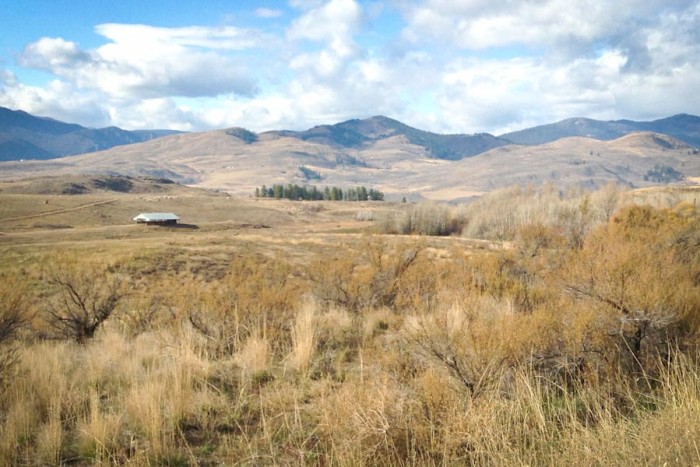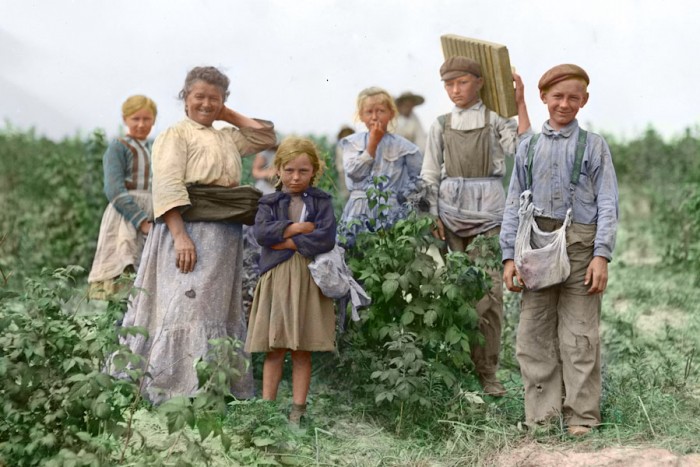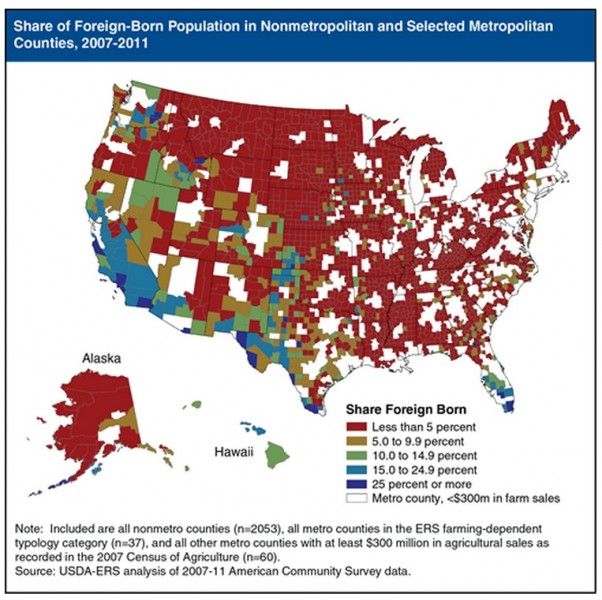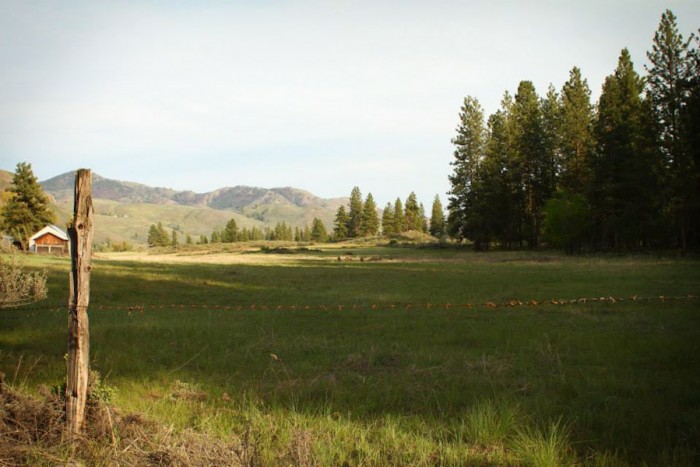
“Wouldn’t it be boring for you to live there because everyone’s the same?”
That was my friend’s first reaction when I shared with her a dream that my husband and I have been harboring for the past 4 or 5 years: moving to the Methow Valley, a rural area in Central Washington.
She was referring to the lack of racial diversity, with 95% of the area’s population identifying as white according to the latest U.S. census.
But it got me thinking about another kind of diversity that may be lacking in the Methow: diversity in the local residents’ country of origin. Would we be the only immigrants living there?
Census research confirmed that the share of foreign-born residents in the Methow Valley was indeed very small, comprising only four percent — compared to 18 percent in Seattle, and 21 percent in King County overall.
Granted, there are a lot of immigrants working in the Washington’s rural agricultural sector — the state’s foreign born population is about 13 percent overall. But the Methow Valley’s lack of global diversity is about average nationwide. According to the U.S. Department of Agriculture the average foreign-born population for all U.S. non-metropolitan areas or metropolitan areas with a significant agricultural economy is estimated at just 4.1 percent.
By contrast, in the U.S. as a whole, immigrants represent 13% of the total population.
So it’s true that fewer immigrants live in rural areas — but that wasn’t always the case.
Throughout the 19th and early 20th centuries, many newcomers to the U.S. chose to forego major urban centers in favor of life on the land. Willa Cather’s famous novel, O Pioneers!, describes the lives of Swedish, Czech, and French farmers in Nebraska, while here on the West Coast, Japanese immigrants commonly worked in agriculture, typically hiring themselves out as farm laborers before launching their own farms or produce stands.

Immigrants also frequently found employment in other rural-based industries such as mining, timber, and fishing.
While the economy has shifted since then to be more urban-centered, rural areas should still be attractive places for immigrants to live for all kinds of reasons.
For one thing, most people’s major living expense — the cost of renting or owning a home — is significantly lower outside of a metropolitan area. This is particularly attractive coming from a city with skyrocketing rents and home prices like Seattle.
According to Zillow, the median Seattle rent list price is now $1,795 and the average value of a Seattle home is $494,000. By contrast, the median list price of a house in Twisp, the Methow Valley’s biggest town, is just $269,000.
Data shows that immigrants tend to be more entrepreneurial than the U.S. born individuals. Rural areas, which tend to lack many of the amenities that cities have in abundance, seem to present a wealth of opportunities to open small businesses that would cater to local residents or tourists. Think anything from a restaurant featuring a locally underrepresented ethnic cuisine to a hair salon to a landscaping business.

And, of course, the countryside is where the farms are! From my work experience at Neighborhood House, an anti-poverty non-profit working with immigrants and refugees arriving in the Seattle area from all over the world, I know that many of our clients come from rural areas in their home countries where they engaged in small-scale farming. Being able to support themselves in the same way after moving to the U.S. would seem like an attractive option. No need to master a lot of new skills or learn to navigate an urban environment.
Two fellow immigrants I spoke to, however, had reservations about the promise of a rural lifestyle, and listed many compelling reasons why immigrants typically move to — and stay in — urban areas.
“The reason why refugees and immigrants move to the city is because of the sponsor. Wherever the sponsor is, that is where they will settle,” explains Mergitu Argo, who is from East Africa and works as a community organizer for OneAmerica.
The sponsor — either a family member or agency — will usually find them an apartment, show them where they can get services, or school for the kids, helping smooth the way for a new arrival’s adjustment to life in the U.S.

In Washington state these days, that often means moving to far North and South Seattle, Kent, Federal Way, Bellevue, and Redmond.
But once they are more familiar with their adopted homeland’s way of life and have gained English fluency, wouldn’t immigrants and refugees consider moving out of the city?
Argo says that very few people actually do that. Even several years down the road, they are still likely to need access to services, which tend to be concentrated in urban areas.
Another barrier for an immigrant considering a move to a rural area might be the lack of a shared ethnic community.
“I don’t think they will feel comfortable living out there by themselves…” Argo says. “When they move, they move together. But if it’s just one East African family in the middle of white people, they will be uncomfortable.”
Lyalya Fokina, a software engineer at VoiceBox, offers an even more basic explanation for the small number of immigrants moving to rural areas today, compared to 100 or 150 years ago. Fokina, who moved to the U.S. from Saint Petersburg, Russia, and has spent the past 15 years in the Seattle area, points out that in the past, most immigrants to the U.S. were agricultural workers back home, and naturally wanted to continue practicing the same occupation in this country. But today, most immigrants come to the U.S. with skills in urban occupations.
Additionally, Fokina notes, employment opportunities tend to be concentrated in urban areas, at least for those like her, whom she terms “professional immigrants” — foreigners who typically arrive in the U.S. on work visas, sponsored by an employer.
Once they have settled in, a “snowball effect” develops: while immigrants could find work elsewhere, they are reluctant to leave their current place of residence because they have already built ties and connections with others in their community.
Both Argo and Fokina admit that a rural lifestyle holds a certain appeal.
“I wouldn’t mind it if I had horses and cows,” says Argo, whose father used to raise horses, donkeys, cows and chickens back home. While she likes Seattle, she says the city, particularly the downtown area, is “too crazy” for her, with “too much pollution.”
“If I lived in a rural area, I think I would be happier and healthier,” she muses.
The problem is, what would she do in a rural area?

“All my life, I’m an advocate, activist, organizer, case manager,” she explains. She would likely try to find a local community service provider to work for, perhaps delivering recreation services, supporting women, or providing parenting education.
“I’m not going to be a farmer,” she laughs.
Fokina believes that many of her fellow Seattle-based Russian software engineers would love to hole up in the woods, if only they could somehow manage to keep working at their job from there. However, she feels strongly that she herself is not cut out for country living.
“It is simply a matter of taste,” she offers, adding that she would miss the city’s many cultural opportunities, such as her Seattle Symphony and Seattle Opera subscriptions, as well as her periodic visits to SAM and outings to local theaters.
“I grew up in Europe; I’m used to going outside and seeing people in the street,” Fokina explains. She dreams of moving to a large Western European city some day, or possibly to New York.
As for my husband and I, we seem to be on a trajectory of moving to progressively smaller and smaller communities, from Fokina’s beloved NYC with its 8.5 million residents, to Seattle (population 583,000 when we moved her in 2006), to — one of these days — Winthrop or Twisp, with 2,000-2,500 residents, or possibly even the tiny hamlet of Mazama, home to just 150 people.
Living within easy access of year-round outdoor recreational opportunities, belonging to a small, tight-knit community that values nature and the arts, and being able to afford the “American dream” of owning a home are all factors strongly pulling us towards the Methow Valley.
We figure that we can just make the four-hour drive back to Seattle a few times a year, when we feel the urge to visit the ballet, catch a movie at SIFF, or enjoy a bowl of pho in the International District. And, not having made friends among Russian immigrants in nearly 9 years in this city, we doubt that we will miss having former compatriots around.
“When you move, I will move,” Argo told me jokingly during our interview. I might take her up on that sooner than she expected!


Wonderful article. Close to my heart here in Nebraska where we re-settled from Massachusetts.